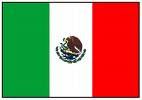
Bananas as we know them today are on the point of extinction. This happened once before and the end result was the grafting of the banana we now eat.
Bananas Could Go Extinct
by Alfredo Carpineti
Bananas are the most popular fruit in the world, but they could soon be killed off by a deadly fungus. In the last few years, a banana-killing disease has spread from Southeast Asia to the Middle East, Africa and Australia.
According to a new study, published in PLOS Pathogens, the perpetrator is called Tropical Race 4 (TR4), which originated in Indonesia in the 1960s and has now spread so widely that it’s threatening the world banana production.
In the study, they call for major investment into the breeding of new varieties of bananas and better analysis and quarantine of contaminated soils. "The current TR4 epidemic and inherent global attention should be the wake-up call for these much needed strategy changes," they said in the paper.
This is not the first time bananas are on the verge of extinction. In the 1950s, almost all Gros Michel bananas (the main type of banana farmed at the time) were wiped out by thePanama disease, caused by the fungal pathogen Fusarium oxysporum. A new species of banana, resistant to the fungus, was introduced in the affected areas, known as the Cavendish.
Today, the Cavendish accounts for 47 percent of the entire production of bananas, and the vast majority of the bananas sold in the temperate regions of the world are Cavendish, but it is now at threat from TR4. This disease is also a strain of Fusarium oxysporum, but is produced from a different strain to the Panama disease. TR4 enters the roots of banana plants and invades the vascular system, spreading and making the plant die of dehydration.
It's difficult to breed fungus-resistant bananas. All Cavendish plants are clones, exact copies of each other, and so are the Gros Michel plants. If an illness affects one plant, it will affect all the others. All bananas come from the careful breeding of wild bananas, until a seedless offspring is formed. This makes producing more seedless bananas easy, but opens the plant to the possibility of devastating diseases that can wipe out entire plantations.
The study doesn't quite herald the "bananapocalypse," but the scientists have looked at the evidence from around the world and highlighted that we have developed no way to stop the spread of the disease. So far, measures to destroy the fungus, such as putting infected soil or bananas in quarantine, have been inadequate and ineffective.
Banana crops are mostly produced by small-holder farms and 85 percent of the production goes to local markets. The disease could take away the livelihood of millions of peoplearound the world. Researchers think that the disease will continue to spread as long fungus-susceptible varieties are being grown.

















